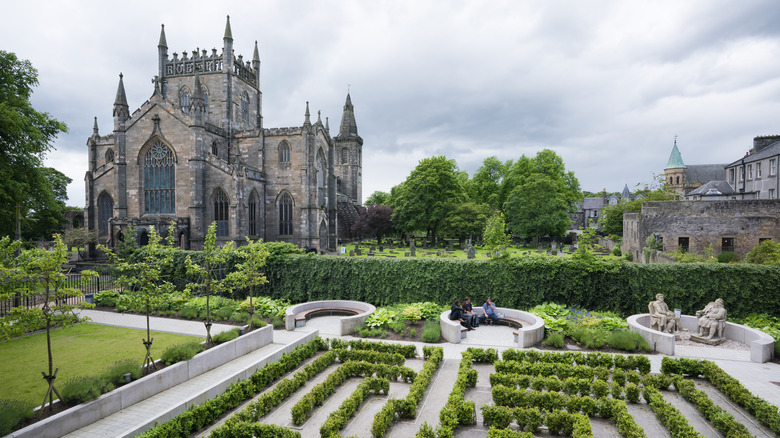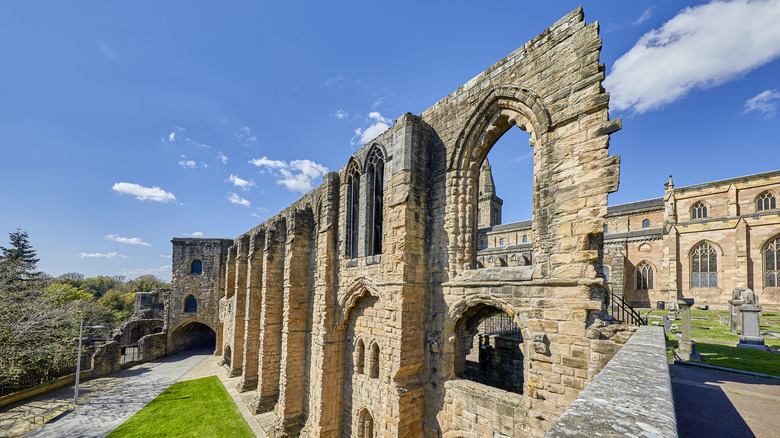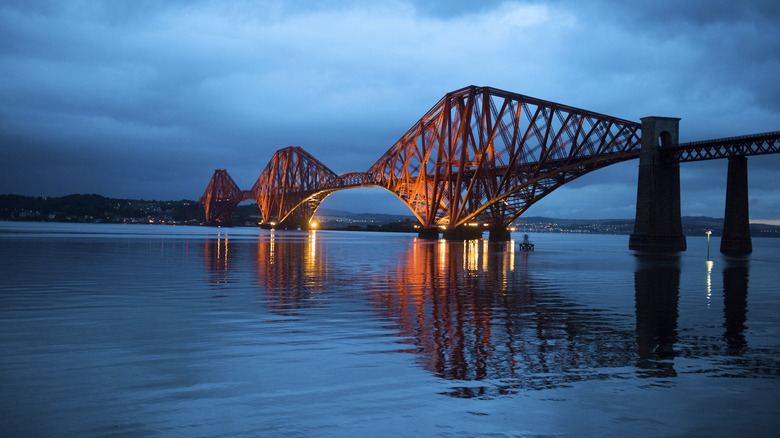One Of Scotland's Newest Cities Is A Breathtaking, Walkable Destination With Plentiful Historic Spots
The ancient capital of Scotland between the 11th and 15th centuries, Dunfermline, is a beautiful, historic city, just a hop across the Firth of Forth from Edinburgh. Historically speaking, there are few Scottish regions with quite so much royal history. It was founded in the 11th century by King Malcolm III and is a resting place for at least seven royals, including kings. And while in modernity, its royal credentials have somewhat dwindled, Dunfermline was crowned a city in 2022 as part of Queen Elizabeth's Platinum Jubilee celebrations, a regal bookend to the city's long royal connections.
The old part of Dunfermline is filled with historic architecture and intriguing little museums, all of which are easily walkable in just a few minutes. But you'll also find a modern edge to Dunfermline, with buildings like the Dunfermline Carnegie Library & Galleries, which blends a historic library and the facade of an old bank with a contemporary extension. Alongside a regiment of pubs, the city also enjoys a decent food scene, with modern Indian dining at Dhoom, local seafood and Haggis at Jack 'O' Bryan's, and excellent craft beers and burgers at the wonderful Old Inn (with views of Dunfermline's wonderful abbey).
Exploring the history and sights of Dunfermline
Dunfermline's lovely town center is at its prettiest in the heritage quarter, an old quarter filled with charming historic houses, as well as various sculptures, idyllic gardens, and a handful of cultural attractions such as the Dunfermline Carnegie Library & Galleries. Look out for the pinkish, orange-toned walls of the 16th-century Abbot House, the town's oldest house, which has a gift shop featuring the work of local artists, a convivial cafe, and a recreated 17th-century style garden.
The most notable site in Dunfermline is the 12th-century Dunfermline Abbey. Originally a priory, the abbey was the venue for at least one royal wedding and is the resting place of royals like Malcolm III and Robert the Bruce. The remains of the original abbey are a collection of well-preserved atmospheric ruins, with the refectory, the old nave, and the gatehouse its most recognizable remains. But the abbey ruins adjoin the abbey church, whose central tower has a unique inscription: King Robert the Bruce, carved into the stone around its top. But the church's uniqueness continues, as you'll see standing in the graveyard, the church is two churches connected in the middle, with the older Abbey church, with its stunning arched interiors and impressive stained glass windows, being of most interest.
On the back of the abbey, you'll note a large green space which is the lovely Pittencrieff Park, a public park with various gardens: the Italian Garden, Japanese Garden, and the Lairds Garden, a statue of the renowned Scottish-American philanthropist Andrew Carnegie, and a glasshouse. For walkers, the park is ideal, with paths cutting through attractive woodlands following numerous themed routes.
Getting to Dunfermline and continued exploration
Getting to Dunfermline is nice and easy from Edinburgh, the Scottish capital, home to one of Scotland's best sightseeing walks. You can drive between the cities in around 50 minutes, but the best way to arrive is by rail, taking the direct train from Edinburgh Waverley Station to Dunfermline Queen Margaret Station in around 40 minutes. This route takes you over the iconic Forth Bridge, the massive UNESCO-listed red cantilevered bridge, which, as well as being almost entirely unaltered since its opening in 1890, enjoys breathtaking views of the Forth estuary.
The closest airport to Dunfermline is Edinburgh Airport, at about 15 miles away. From there, you can easily take a local tram or a bus from the airport to connect to the Dunfermline train from either Edinburgh Gateway or Edinburgh Waverley, with the entire route usually taking no more than 50 minutes.
Nestled as it is in Fife, a picturesque coastal region in the east of Scotland, Dunfermline makes an excellent stop on a wider itinerary of Scotland. There are idyllic stretches of beach, world-class golfing in St Andrews, and pretty-as-a-picture villages. From Dunfermline, you can explore the stunning Fife countryside, traveling the rural coastline of villages such as Pittenweem, home to a 12th-century Augustinian priory, and Crail, with its tiny yet picturesque marina surrounded by charming old houses. Alternatively, head back to Edinburgh and take the direct 45-minute train to fascinating Glasgow, Scotland's most underrated destination.


